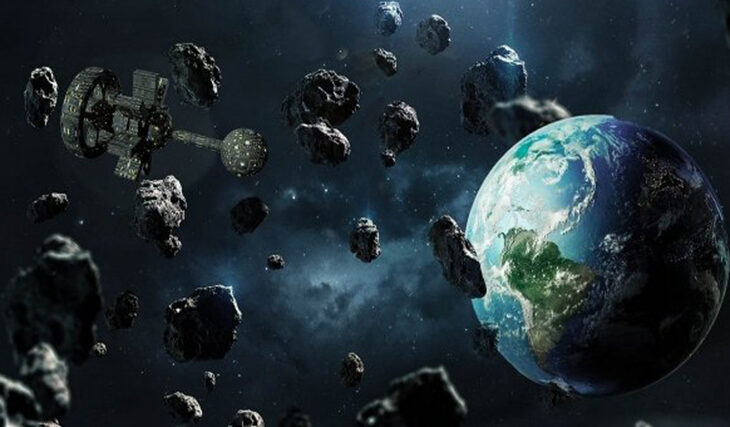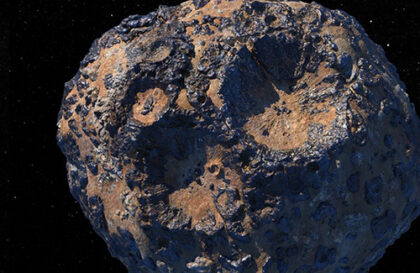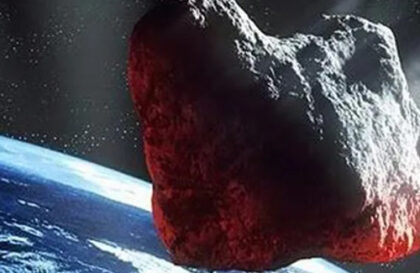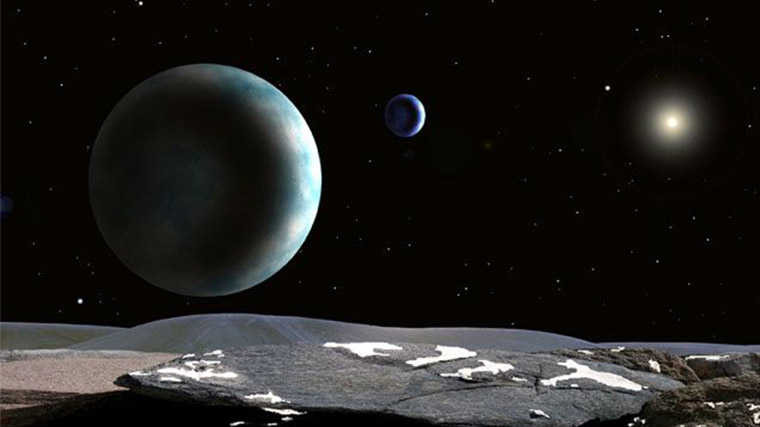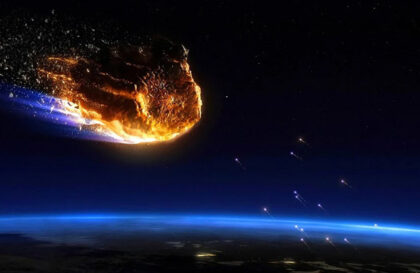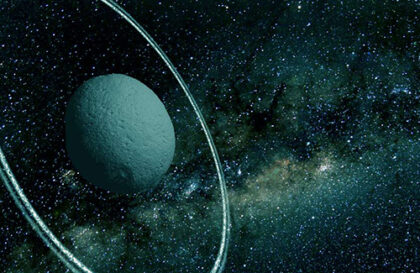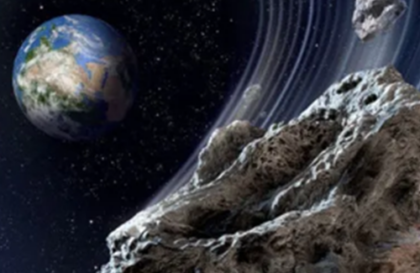Five asteroids, one the size of a house and two the size of an airplane, will fly past Earth from September 6 to September 12, 2023, according to NASA.
The first of the asteroids, JA5, will fly past the planet on September 6, the distance to Earth will be more than 5 million kilometers. The asteroid was first spotted in 2021 and scientists estimate its diameter to be approximately 18 meters. That is, its dimensions are comparable to a house.
Two more asteroids will approach the Earth on September 8, these are the celestial bodies QC5 and GE. The diameter of the first is approximately 24 meters, and the second – 7.9 meters. The first “space rock” was discovered in 2023; at the moment of its closest approach to the planet, it will be at a distance of about 4 million kilometers from it. The second was opened in 2020 and will fly 5.7 million kilometers from Earth.
Another airplane-sized asteroid, QF6, will approach our planet on September 10, passing 2.6 million kilometers from Earth. The space rock was first spotted just this year; scientists estimate its diameter to be 20.7 meters.
The last of the expected asteroids, RT2, will approach the planet on September 12, passing 4.2 million kilometers from it. Scientists discovered it in 2020 and estimate the diameter of the asteroid to be 7.6 meters.
None of these asteroids are expected to be hazardous to Earth.
Which asteroids are dangerous?
Asteroid size
If a 20-meter asteroid hits Earth, the consequences will depend on many factors, such as the angle of impact, speed, composition of the asteroid, and the exact location of impact. In general, such a small asteroid will likely burn up in the atmosphere or become small fragments that pose no serious threat.
However, if it were able to reach the surface of the Earth, it would create a small crater and cause local destruction. This could include damage to buildings near the impact site. There is no comparison with the catastrophic events associated with large asteroids.
Yes, asteroids of this size have hit Earth in the past. Here are some examples:
1. Tunguska Event (1908): This was an explosive event in Siberia, probably caused by the explosion of an asteroid or comet. Although the exact dimensions of the body are not known, it is assumed that it has a diameter of about 50-60 meters.
2. Chelyabinsk meteorite (2013): This was a supersonic explosion of an asteroid in the atmosphere over the Chelyabinsk region in Russia. The asteroid measured about 17-20 meters in diameter.
Both of these incidents resulted in significant damage from air shock waves and flying debris.
Transient asteroids
There are known cases of asteroids that entered the Earth’s atmosphere passed tangentially, and left it without hitting the surface. Such asteroids are called “transient lunar phenomena” (TLP).
One of the most famous examples is the asteroid 2008 TC3, which was discovered relatively recently, in 2008. It entered the atmosphere over Sudan and disintegrated in the atmosphere before reaching the surface. But such events are extremely rare.
Asteroid speed
The degree of destruction depends not only on the size of the asteroid but also on its speed.
The speed of asteroids upon entry into the atmosphere can vary significantly depending on their origin and orbit. They usually move at speeds ranging from several kilometers per second to tens of kilometers per second. For example, the typical speed of an asteroid entering Earth’s atmosphere from the asteroid belt is about 20 km/s (72,000 km/h).
This high speed causes asteroids to undergo intense thermal and mechanical stress as they pass through the atmosphere. Many of them burn completely or break down into small fragments before reaching the Earth’s surface.
Asteroid material
The material of an asteroid has a significant influence on its behavior in the Earth’s atmosphere upon entry. Here are some main aspects:
1. Composition and Density: Stony asteroids, composed primarily of rocky materials, tend to disintegrate more quickly in the atmosphere due to thermal and mechanical stress. While metallic asteroids can more successfully resist these factors.
2. Thermal impact: The entry of an asteroid into the atmosphere is accompanied by significant heating due to its high speed. This results in different thermal reactions depending on the composition. For example, some materials may crack or melt more quickly.
3. Physical strength: Different materials have different physical strength. This is important for how quickly the asteroid is destroyed as it passes through the atmosphere.
4. Release of substances into the atmosphere: Some materials may release gases or particles into the atmosphere when heated. This may affect the characteristics of the trail or the light phenomenon visible during entry.
5. Formation of meteorites: If an asteroid reaches the Earth’s surface as a meteorite, its composition will determine the chemical composition and structure of the meteorite.
Differences between an asteroid and a meteorite
Asteroid and meteorite are two different terms related to space objects:
An asteroid is a celestial body, usually rocky or metallic, that orbits the Sun and is usually found in the asteroid belt between the orbits of Mars and Jupiter. Some asteroids can be quite large and even have their satellites.
A meteoroid is a small cosmic body that may be part of an asteroid or comet. Meteoroids can range in size from a speck of dust to several meters. When a meteoroid enters the Earth’s atmosphere and begins to sparkle due to high speeds and heat, it is called a “meteor” or “shooting star.”
Meteorite – If a meteoroid does not completely burn up in the atmosphere and reaches the surface of the Earth, then what remains of it is called a meteorite. Meteorites can come in a variety of sizes, from small rocks to large objects.
So, the main difference between an asteroid and a meteorite is where they are located and what happens to them in the Earth’s atmosphere.
What pushes asteroids towards Earth?
Factors that influence whether an asteroid will head towards Earth:
Gravitational influence: The gravity of planets, including Earth, can influence the orbit of an asteroid. In some cases, this can lead to a change in its trajectory so that it crosses the Earth’s orbit.
Interaction with other space objects: Collisions with other asteroids, comets, or planets can change the asteroid’s trajectory and, in rare cases, put it on a course toward Earth.
Gravitational extensions: Asteroids can be affected by gravitational extensions from nearby objects, which can cause slight changes in their trajectory.
Orbital Resonances: Asteroids can fall into resonant orbital configurations with planets, which can affect their motion and bring them toward Earth.
Phenomenon “Change in Brightness and Trajectory” (Yarkovsky effect): This is a small but continuous change in the trajectory of an asteroid due to uneven radiation of heat from its surface in outer space.
Gravitational effects of space agencies: In rare cases, space agencies may conduct missions that alter the trajectory of an asteroid to investigate or deflect a threat.
How to protect yourself from an asteroid?
There are several ways to protect yourself from potential meteorite threats:
1. Early detection and tracking of asteroids and comets helps predict their trajectories and possible impacts on Earth. This gives you more time to prepare.
2. Research and development to create technologies to deflect asteroids and comets, such as the use of kinetic impact probes, gravitational thrust, or nuclear strikes.
3. Assessing the risks and potential consequences of a meteorite impact allows us to better understand which regions may be affected and what precautions should be taken.
4. Developing action plans and preparing the public for possible scenarios is an important aspect of ensuring safety during meteorite hazards. Conducting exercises and simulations with experts and organizations helps improve preparedness and coordination in the event of a threat.
For now, most precautions are taken at the research and government agency level, and the specific response to a credible threat will depend on a variety of factors, including the characteristics and trajectory of the threat.
A 300-meter asteroid is already close
On April 13, 2029, the 300-meter asteroid Apophis may come very close to our planet. It can be seen with the naked eye and will pass at an altitude where most satellites orbit the Earth operates.
No one noticed an asteroid with the impact energy of 10 atomic bombs
On December 18, 2018, a meteor the size of a school bus and with the impact energy of 10 atomic bombs exploded over the Bering Sea, between Russia and Alaska. Almost no one noticed his flight and no one foresaw that this would happen.
According to NASA, the meteor weighed about 1,500 tons, had a diameter of about 32 feet (10 meters), and was traveling at about 71,582 miles per hour (115,200 kilometers per hour) when it exploded at an altitude of 15.5 miles (25 kilometers). over the ocean. This explosion had a power equivalent to 173 kilotons of TNT, about 10 times the power of the atomic bomb dropped on Hiroshima during World War II.
Global asteroid monitoring teams failed to spot this space rock due to its small size.
NASA is most concerned about the discovery of asteroids measuring about 460 feet (140 meters) in diameter, which could pose a serious threat if they pass through the atmosphere and reach the Earth’s surface.
Image credit:
https://tech.hindustantimes.com
https://www.nasa.gov
https://www.thenakedscientists.com
https://www.express.co.uk
